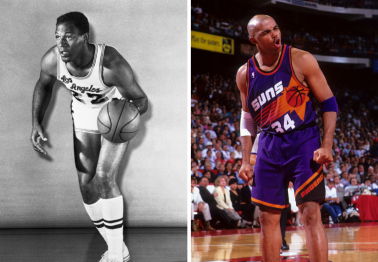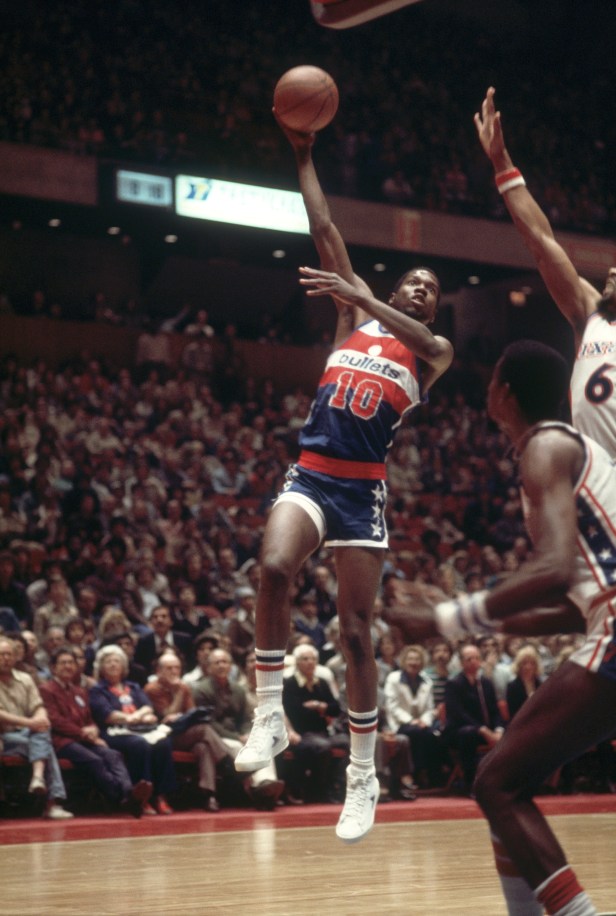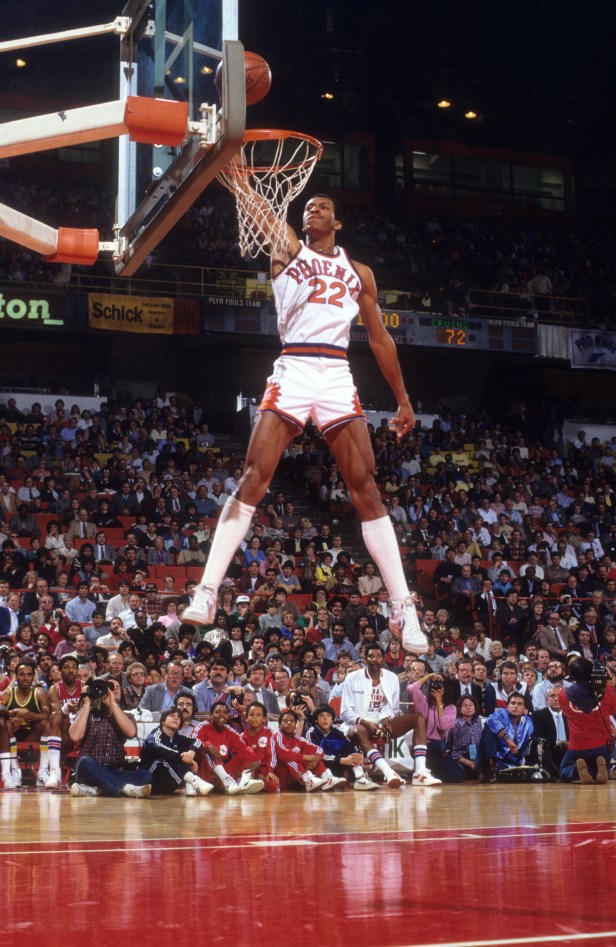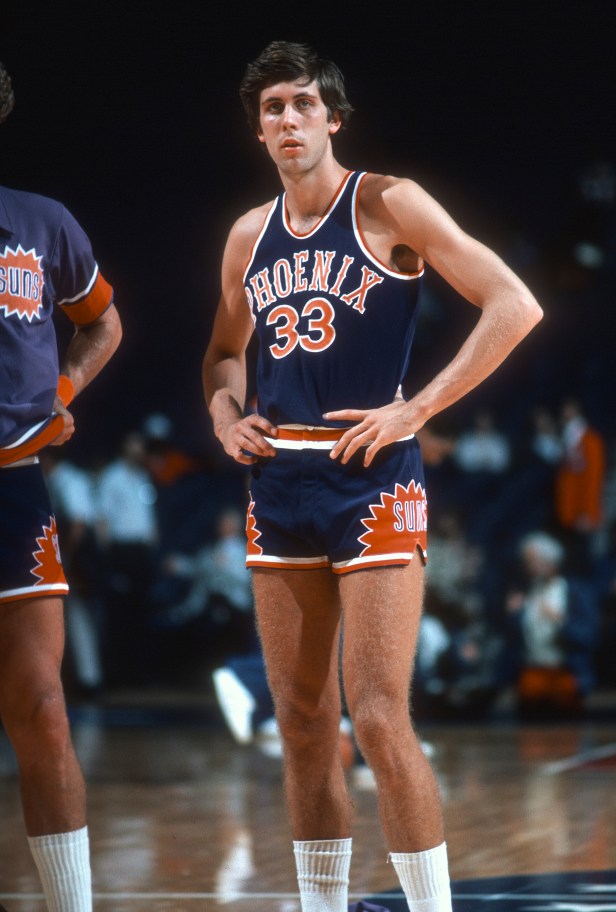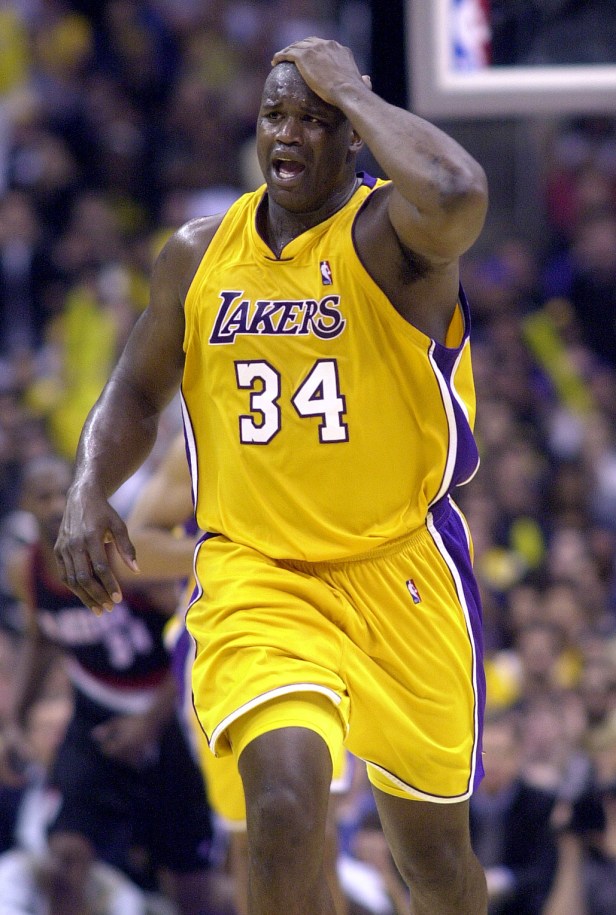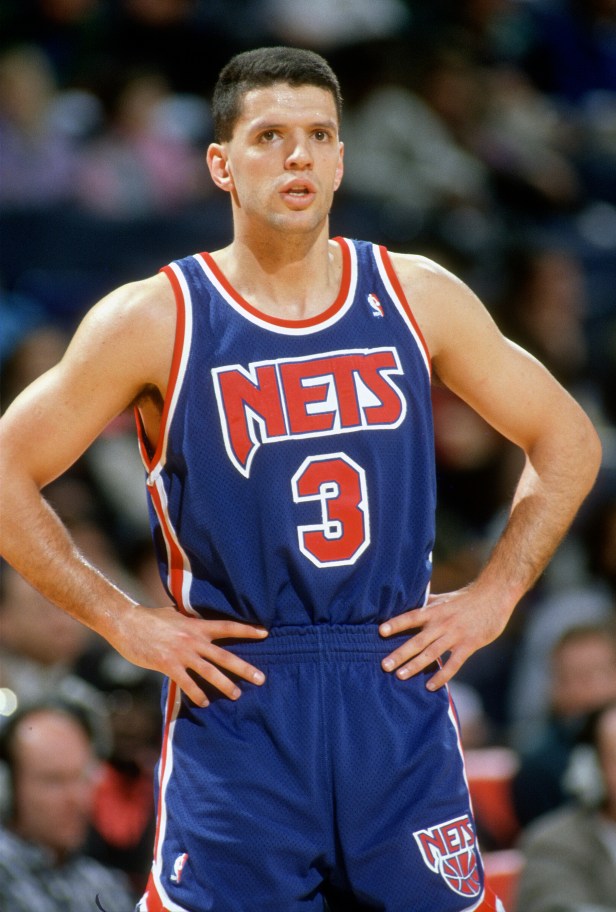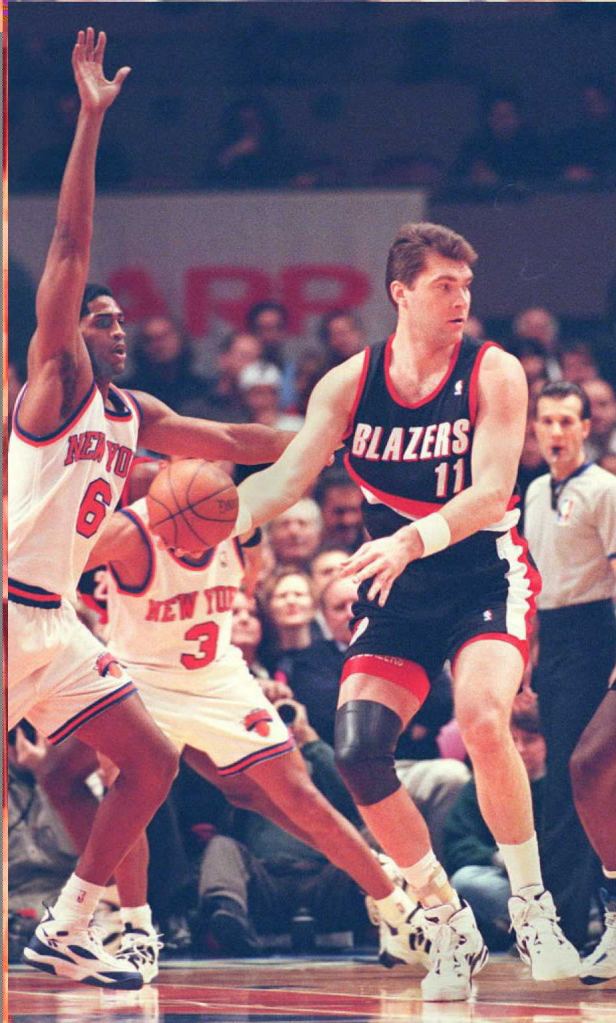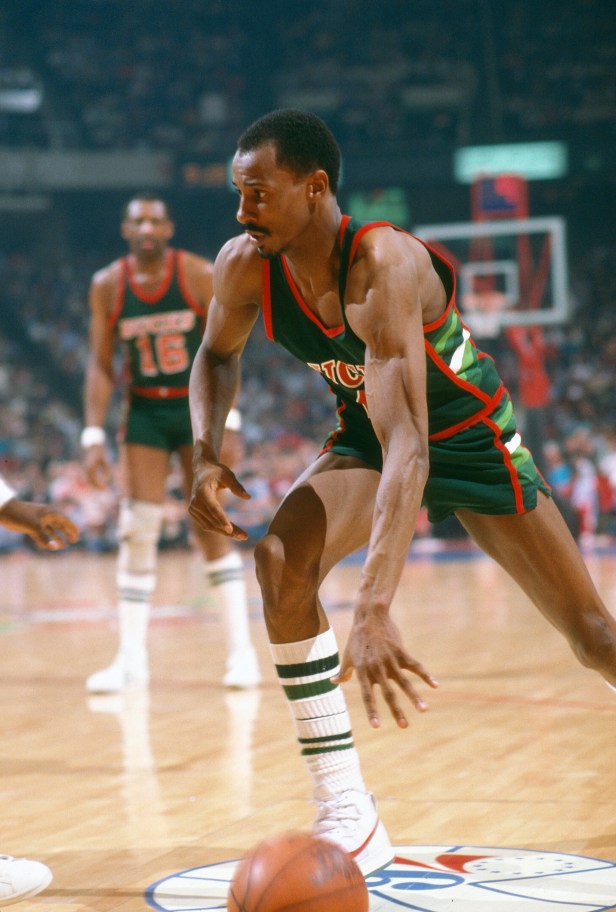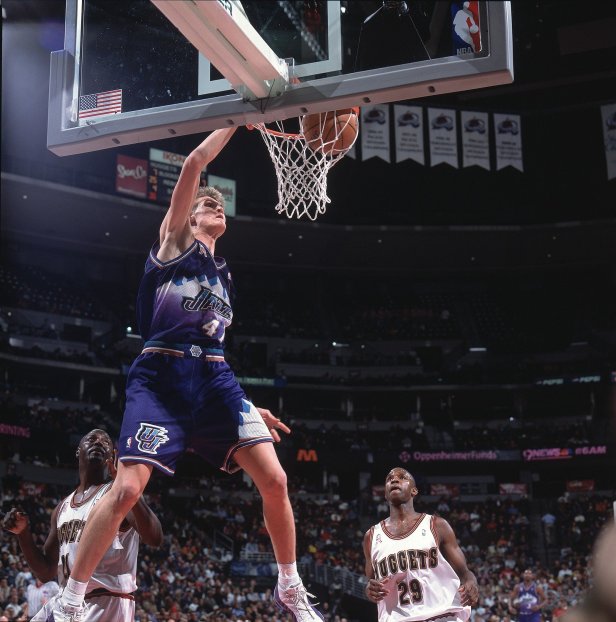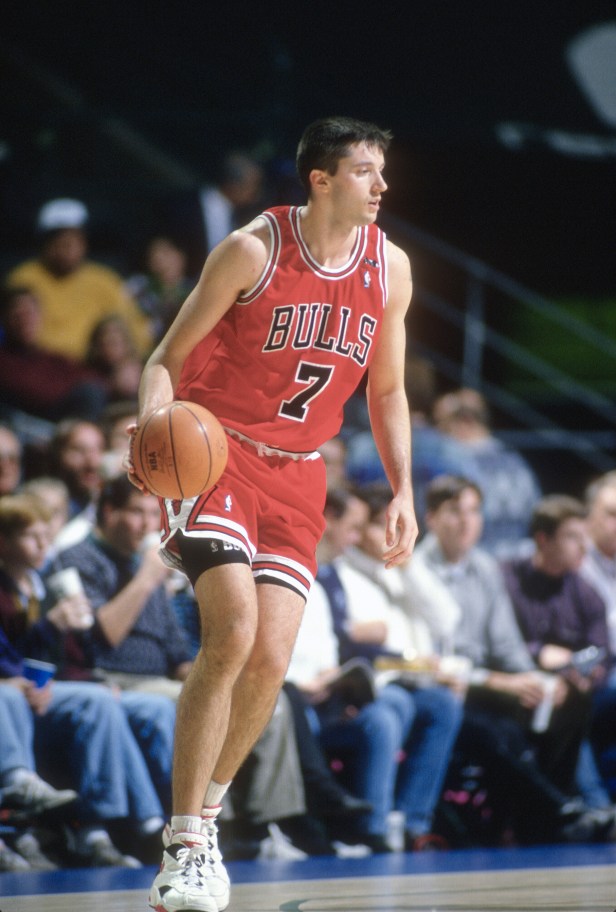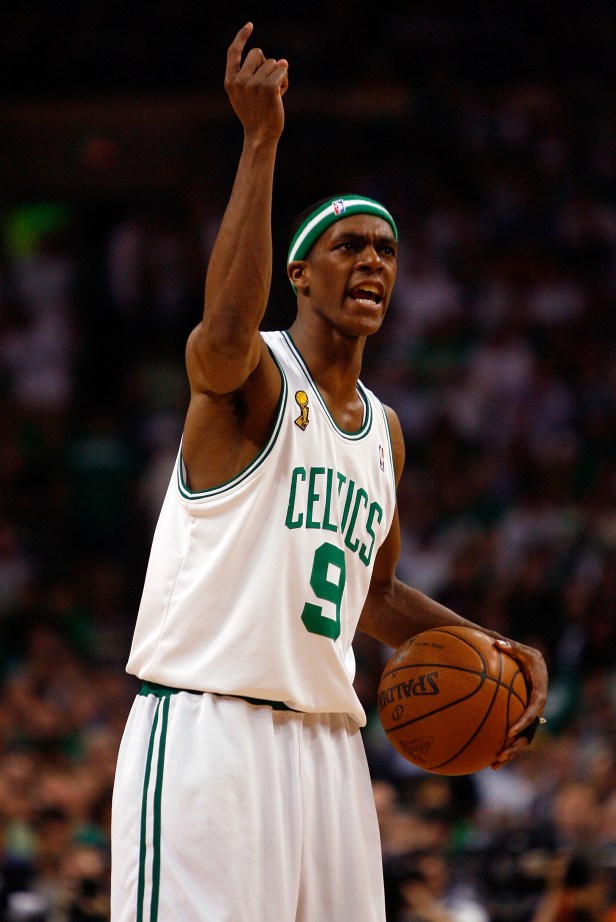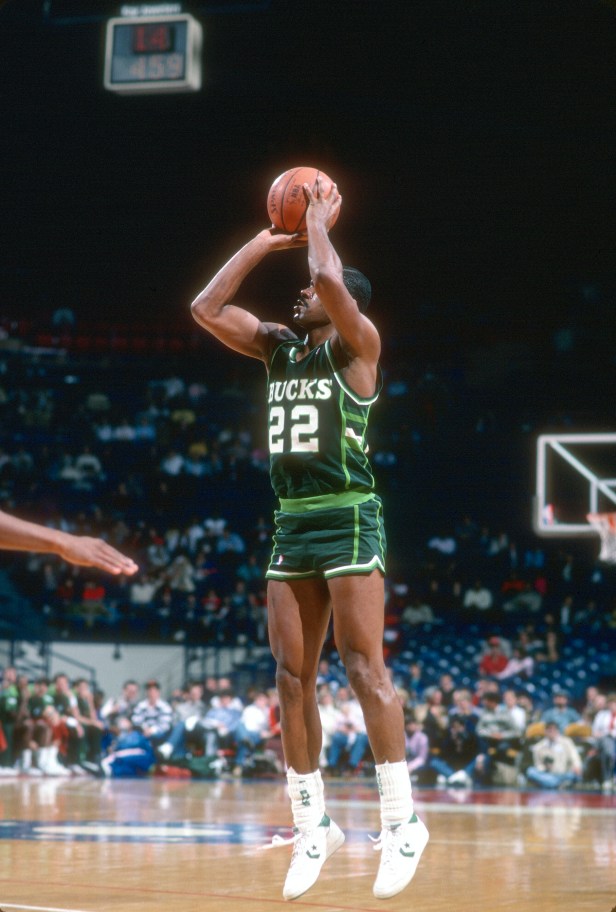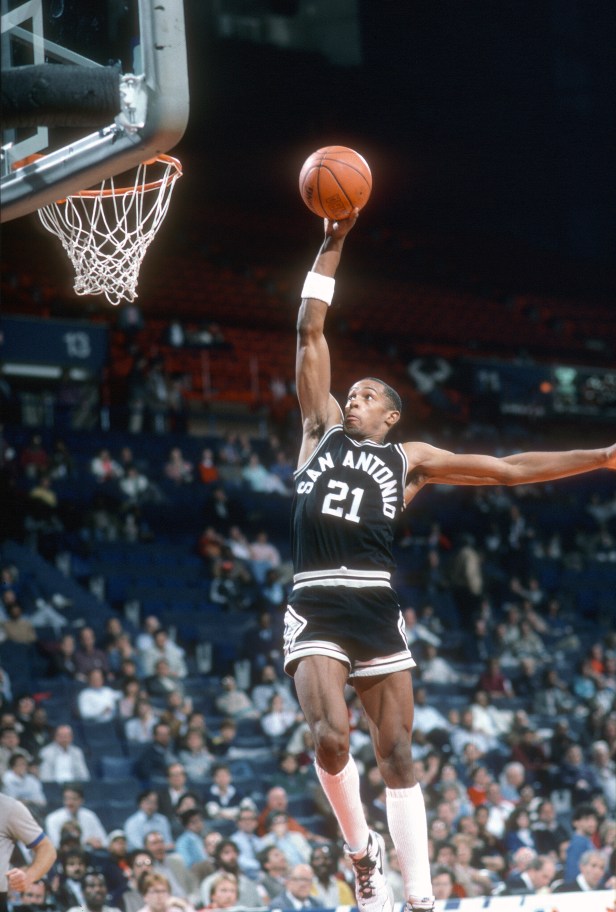For every LeBron James, Kareem Abdul-Jabbar, James Harden or Stephen Curry born into exactly the right NBA era for their style of play, there are a lot of guys who would've been much better if they'd been in the league during a different decade.
Sure, someone like Kevin Durant, Tim Duncan or Hakeem Olajuwon would dominate no matter when they played, but a lot of NBA players had skillsets that really did depend on the style of play you put around them. For every Kyrie Irving whose iso-heavy game plays even in the modern pace-and-space league, there's a guy with half-court range who spent his whole career playing before the introduction of the three-point line.
It's not just a perception thing, either; we're not simply talking about guys who would've been more highly regarded if they'd played at another time. Russell Westbrook's infinite supply of triple doubles would have made people think he was the GOAT if he'd played in the '90s before we understood how important efficiency actually is (see also: Kobe Bryant being regarded as a top ten NBA player despite demonstrably, inarguably not being one), but that's not the sort of thing we're getting into here.
No, these are the guys who would've been legitimately better players — not just perceived as such — if only the league had been ready for them. So who are some of the players who must stay up at night wishing they'd been born two decades later? This list is a good start.
16 NBA Players Born Into the Wrong Era
Pete Maravich
Atlanta Hawks/New Orleans Jazz guard Pete Maravich is pretty much the universally accepted answer to this question. Steph Curry before Steph Curry, Maravich had unlimited range and a willingness to fire up shots from anywhere on the court, not to mention his unbelievable passing.
No one has ever played with worse teammates than Pistol Pete: for a three-season span in the '70s, Maravich didn't have a single teammate who averaged even 14 points per game. When you watch his highlights, you're struck by something particularly unusual: his hands move faster than anyone I've ever seen. Seriously, it looks like his hands specifically are in fast-forward while the rest of him is moving at regular speed. The guy just had horrible luck: thanks to a bad knee injury (which also would've been far more treatable now), he retired at only 32, one year before the Boston Celtics team he'd been traded to won the first championship of the Larry Bird era.
Jerry West
Jerry West is pretty much universally regarded as one of the 15 best players of all time, but he never seems to come up in conversations like these. If anything, people assume he benefitted from his era; his athleticism was decent-but-not-great. I get that argument, but I will counter with this: West had half-court range in an era where the three-point line didn't exist.
He was a brilliant passer (he led the league in assists one year) who made five All-Defensive teams...during the last six seasons of his career, which was when the league created the All-Defensive team. West would've been even better than his already brilliant career if he'd played in any era later than his own.
Dave DeBusschere
Dave DeBusschere was a not-all-that-athletic 6-foot-6 Detroit Pistons/New York Knicks power forward who never averaged 20 points per game and left the league before the ABA/NBA merger. So how could he have been better in the modern era? Because his skillset was uniquely suited to it.
DeBusschere might be the best defensive four ever, especially considering his height: he had the technique necessary to defend four different positions and was particularly adept at neutralizing enemy big men. In particular, nobody defended Wilt Chamberlain better other than Bill Russell despite Wilt having a 7-inch height advantage. DeBusschere was also a killer rebounder (relying on positioning more than raw athleticism) and had a murderous three-point shot — before the three-point line existed.
Bob Dandridge
Bob Dandridge is the ultimate forgotten great of the 1970s. A do-it-all forward who played a crucial role on two different championship teams (the 1971 Milwaukee Bucks and the 1978 Washington Bullets — now the Wizards), Dandridge was made for the modern NBA, a defensive marauder who did everything well and was an absolute crunch-time assassin, once locking down a scorching-hot George Gervin in Game 7 of the 1979 Eastern Conference Finals and then drilling the game-winning shot in his face. In particular, virtually nobody could run the court like Dandridge, leading to his nickname: "Greyhound."
Larry Nance
I will die on this hill: Larry Nance is the most underrated player in NBA history. Nance was born more into the wrong era than anyone who was ever played the game. The Cleveland Cavaliers/Phoenix Suns forward was known for the most violent dunks in league history, ran the floor unbelievably well, had some range on his jumper and could defend five positions while protecting the rim with merciless acumen.
I wonder if anyone could use a player like that in today's game? He would've been a living ESPN highlight reel in any other era. Nance ranks ahead of the following guys in Value Over Replacement Player (a solid indicator of how good someone actually was): Bob Lanier, Chris Webber, Robert Parish, Kevin McHale, Chris Mullin, Alex English, Jack Sikma, James Worthy, Artis Gilmore, George Gervin, Alonzo Mourning, Bob McAdoo, Rick Barry, Joe Dumars, Elvin Hayes, Paul Westphal, Dave Cowens and Mitch Richmond. Every single one of those guys is a Hall of Famer while Nance hasn't gotten the call. There's no justice.
Alvan Adams
Alvan Adams is the 1980s forgotten man at the center position. The career Phoenix Suns big man never quite rebounded as well as he was expected to, but he had a solid jump shot and one skill that's in tremendously high demand in the modern NBA: high post passing. There's no reason he would be anything less than a poor man's Nikola Jokic in today's NBA. Maybe he wouldn't win an MVP award, but the guy would at least make more than one All-Star team.
Shaquille O'Neal
Shaq was an unrelentingly dominant basketball player during his era, so what gives? How can a superstar have benefitted from another era? Simple: guys were allowed to foul the Los Angeles Lakers/Orlando Magic/Miami Heat star relentlessly during the '90s and early 2000s before the league cracked down on that crap, because there simply was no other answer to either guarding him or keeping him off the glass; he'd be a Hall of Famer as an NFL lineman, for god's sake.
The guy can barely lift his arms any more from all the punishment he took, and if he wasn't roughly the size of K2, he probably wouldn't have lasted five years in the league. In a 20-year career, Shaq played at least 70 games in the regular season only six times, largely due to just getting beaten down constantly and having to rest his body for the playoffs as much as possible. Sure, his inability to shoot free throws would be a problem in today's game, but with different foul rules, we might be talking about him as the G.O.A.T.
Drazen Petrovic
This one may not be fair, because New Jersey Nets guard Drazen Petrovic was on the verge of stardom before his untimely demise in a car crash. Still, as an absolute three-point assassin (43.7 percent for his career!) before the league new what to do with one, Petrovic didn't even get a chance to start until he was 27. He quickly showed the league what they'd been missing, making an All-NBA Third Team at age 28 before the crash.
Arvydas Sabonis
Young Arvydas Sabonis was a brilliant passing center who crushed the boards and had three-point range, but he was born behind the Iron Curtain and didn't come to the NBA until he was 31 years old. By then his knees had given out (something that also would've been helped by the modern era), but he still managed to average 12 points and 7.3 rebounds as a crucial player for a bunch of Portland title contenders. Young Saba would win multiple MVP awards in today's game.
Sidney Moncrief
Sidney Moncrief was a star during his own time, a five-time All-Star and absolute defensive assassin for the Milwaukee Bucks who won two Defensive Player of the Year awards as a guard (which was possible in the '80s even if it isn't anymore) and ultimately (if belatedly) made the Hall of Fame. So how was he born into the wrong area? Simple: sports medicine. Moncrief hurt his knees and his career vanished overnight. If his injuries had happened in today's game, surgeries would've given him the ability to come back and be at minimum 80 percent of the player he'd been.
Andrei Kirilenko
AK-47 (god, what an All-World nickname) once led the league in blocks as a small forward — that's the kind of player we're talking about here. His versatile skill set (there wasn't anything the guy didn't do well) is really the thing that sets him apart: you could pick any team and any style of play from the modern NBA and he would fit in seamlessly. He made three All-Defense teams during his career, but really that number should have been higher.
Toni Kukoc
The game has become more European as time has gone on, and poor Toni Kukoc missed the revolution by about a decade. You don't get a Luka Doncic in the modern NBA without Kukoc paving the way. Part of the problem here was positional; now we know the best position for a three-point bomber with brilliant passing and good handles is probably at point guard, even if he's 6-foot-10 and looks like a forward. Still, Kukoc did win three straight championships with the Chicago Bulls (even if he had to put up with Michael Jordan while it was happening), so his career can't have been too bad.
Sam Perkins
Sam Perkins was a stretch four before anyone had any idea what that was. A college teammate of Michael Jordan, Perkins never lived up to being the fourth pick in the legendary 1984 NBA Draft (one spot ahead of Charles Barkley!), but that's not even really his fault. A good rebounder and solid defender who developed a killer three point shot as he got older (over 38 percent if you look at the nine years that made up the second half of his career), Perkins was made for the modern NBA's pace-and-space era as a small-ball big man.
Rajon Rondo
Rajon Rondo is one of the few guys on this list who was actually born far too late. His lack of a three point shot (or any shot at all, really) has been the achilles heel of his entire career, but in any era but the current one, it wouldn't matter. An octopus-armed ballhawk with great passing skills and a nasty streak, Rondo would've been the best point guard in the league not named "Magic Johnson" in the 1980s.
Ricky Pierce
Ricky Pierce had one of the weirder NBA careers. He was a bench player who made one All-Star team — the year he was traded mid-season. There might not have ever been a better bench scorer than "Daddy Deuces," who averaged 17.5 PPG or more while playing less than 30 minutes a game four times in his career. Pierce would be just as dominant a bench player today, but he likely would've made more All-Star teams — heck, Manu Ginobili made two of them despite never once averaging 20 points per game.
Alvin Robertson
San Antonio Spurs guard Alvin Robertson was hardly a disappointment during his career — he did make four All-Star teams — but my god, he'd be a deity in today's game. Robertson wasn't just a good defensive player, he was an absolute terror: his 2.71 steals per game is the highest average in league history. He was also a surprisingly good passer and is the only guard to ever record a quadruple-double.




